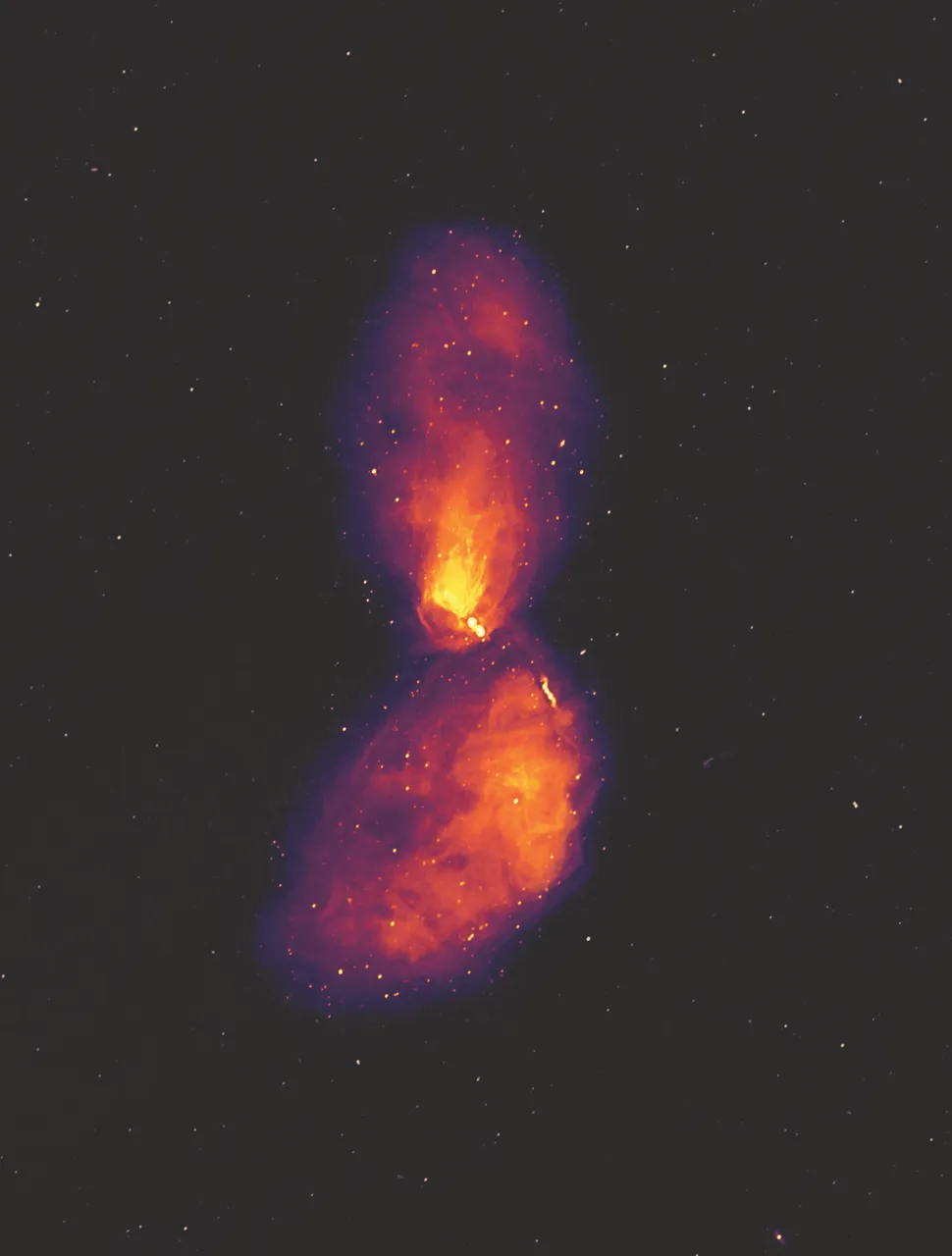The closest active supermassive black hole that sits in the nearest radio galaxy Centaurus A spit out gigantic radio bubbles. A unique image caught by the Murchison Widefield Array is here to dazzle you.

Credit: Ben McKinley, ICRAR/Curtin & Connor Matherne, Louisiana State University.
- Be also sure to check out my other posts and follow me @kralizec and subscribe to my Youtube channel at Kralizec Gaming Youtube Channel
Radio-astronomers sent us a wondrous gift. The so far most detailed image of a monumental eruption of a supermassive black hole. This one sits in the center of a large elliptical galaxy Centaurus A which is about 12 million light-years away. It is the closest supermassive black hole that is actively gorging up on matter while firing up pompous fireworks.
When such a black hole eats up matter – usually cosmic gas orbiting in the accretion disk – matter in its immediate surroundings is fired out at relativistic speeds. This creates bubbles of radio radiation that are growing for millions of years and reach staggering sizes.
Benjamin McKinley from the Curtis University and the International Center for Radio Astronomy Research (ICRAR) and his colleagues observed radio-eruptions of the Centaurus A’s supermassive black hole using the Murchison Widefield Array (MWA) in Western Australia. This device seems just perfect for similar research. From a widefield view, being especially sensitive, to luxurious radio-silence that is found near MWA. The observed eruptions are truly beautiful and so large that you could fit 16 full moons over them in the night sky.
According to McKinley, the final unique image should be able to show us incredible new details about the radio-wave emissions from the hearts' of galaxies. Previous observations of this supermassive black hole and its bubbles weren’t great at dealing with the extreme brightness of the polar matter jets. But McKinley and his colleagues found a solution to that.
The researchers are convinced that the new detailed image of the supermassive black hole supports the recently proposed Chaotic Cold Accretion theory. This theory says that immense clouds of cold gas condense in the galactic halo which then falls into the center of the galaxy and becomes food for the supermassive black hole.
Sources:
- If you like the content I’m producing about science maybe you will like the content I produce about gaming as well! Be sure to check out my other posts!
